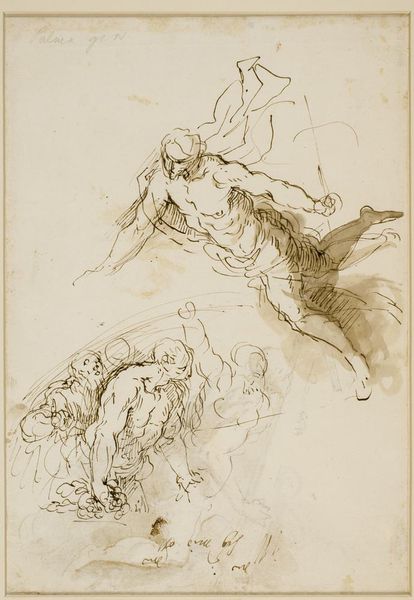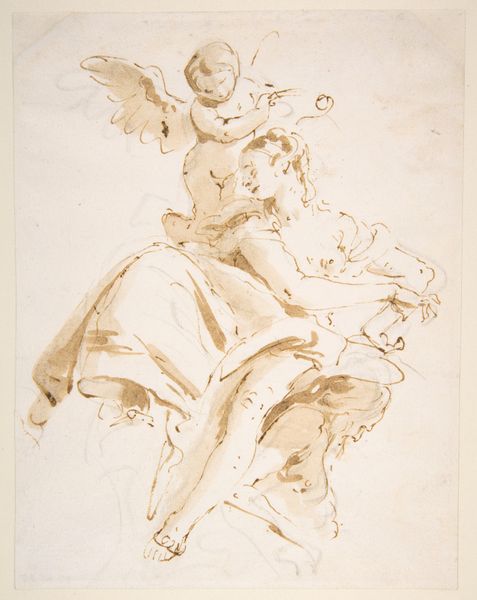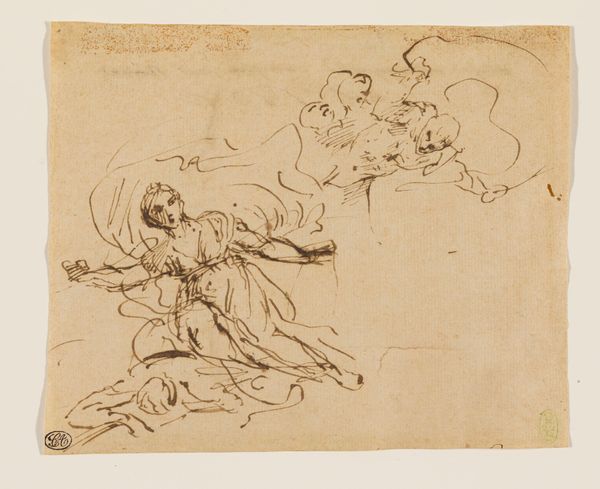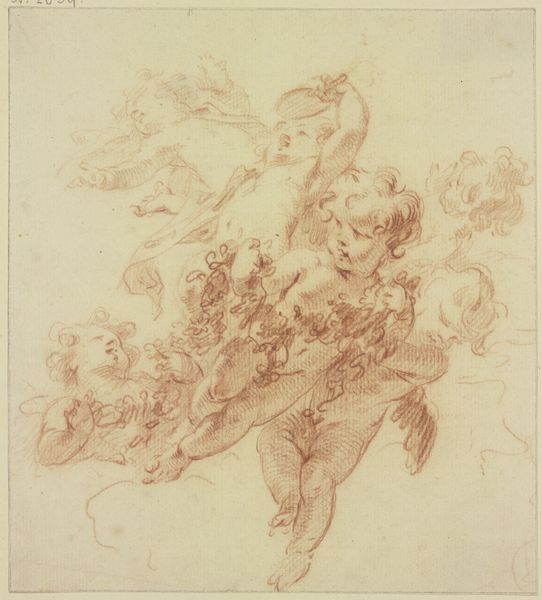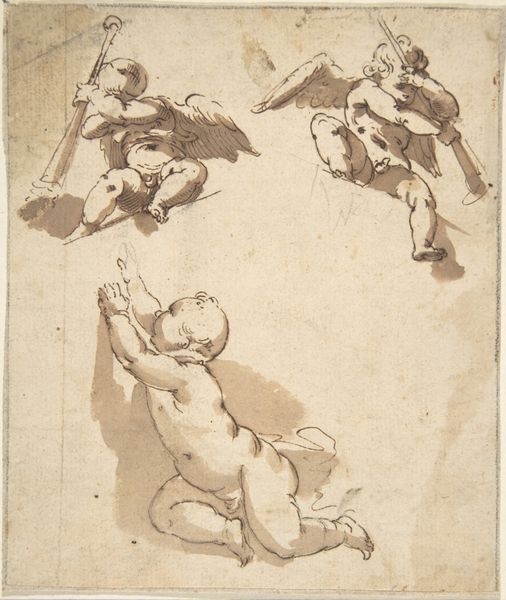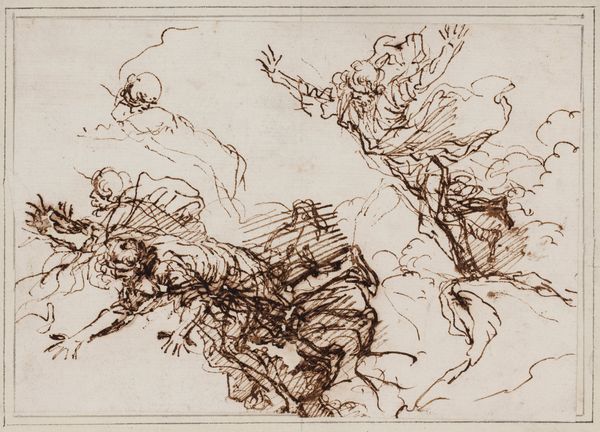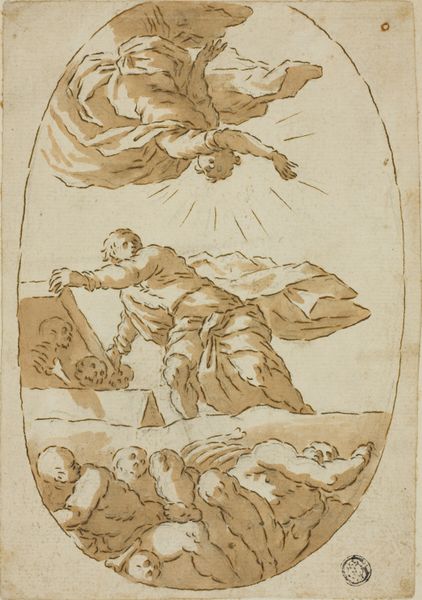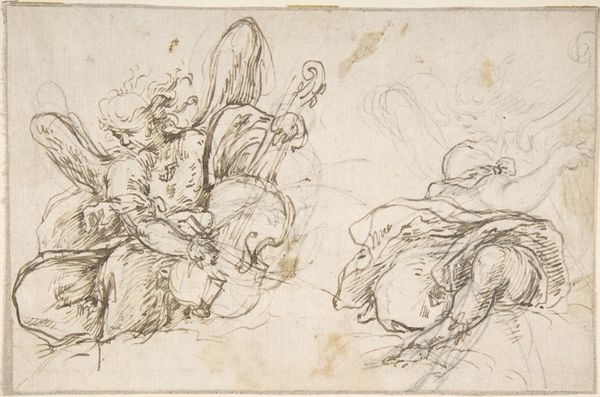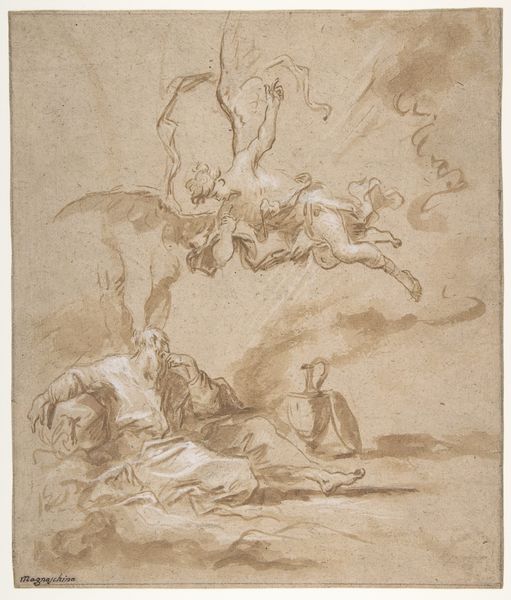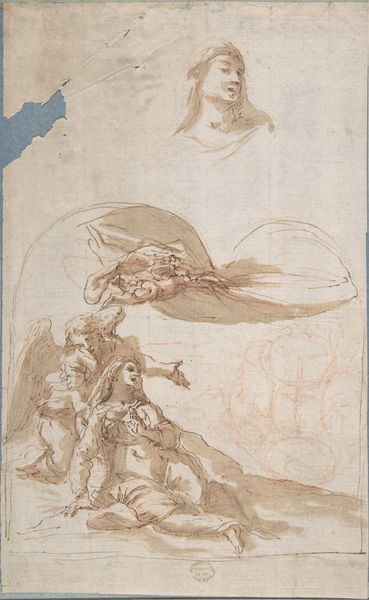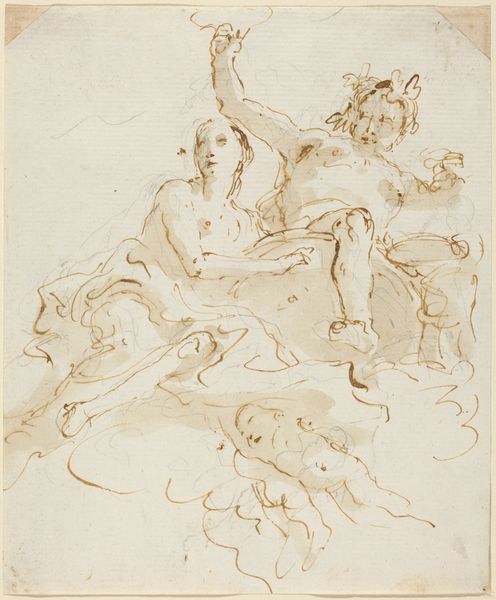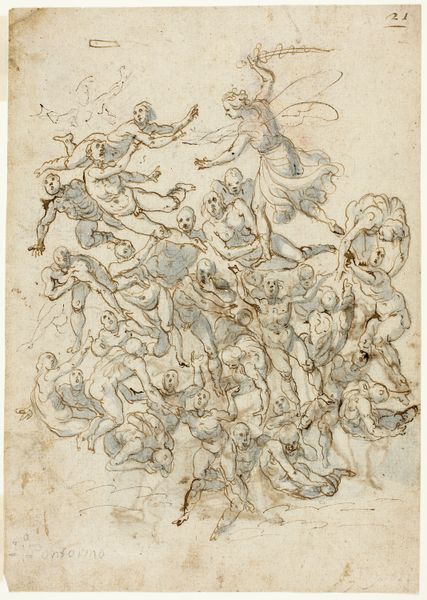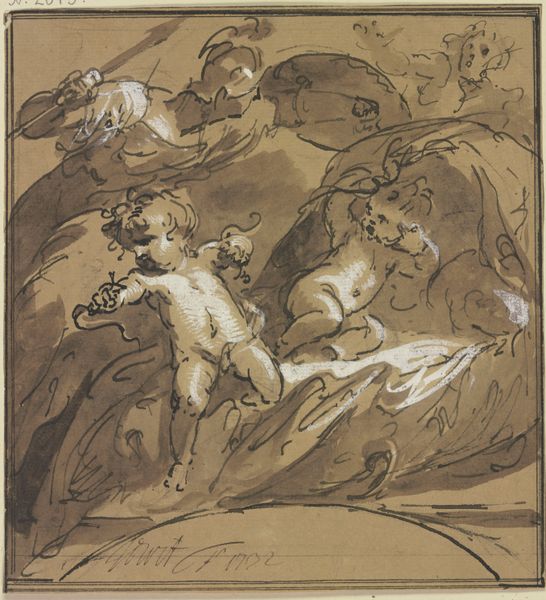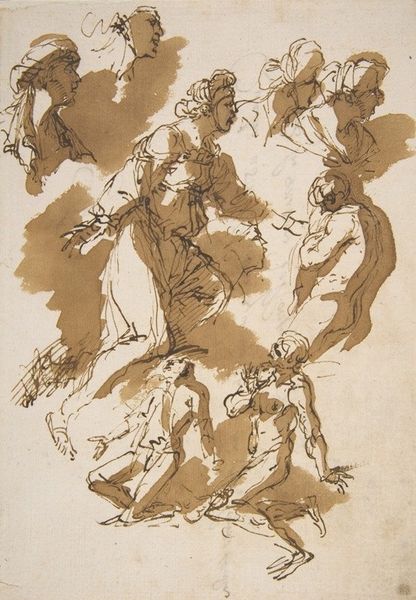
drawing
#
drawing
#
baroque
#
etching
#
figuration
#
italian-renaissance
Dimensions: 5 7/8 x 4 7/8 in. (14.92 x 12.38 cm) (sheet)19 3/4 x 15 3/4 in. (50.17 x 40.01 cm) (outer frame)
Copyright: Public Domain
Curator: Here we have Pier Francesco Mola's "Two Angels in Flight," a drawing dating from approximately 1645 to 1647. It's currently part of the Minneapolis Institute of Art's collection. Editor: My initial feeling is one of lightness. Even with the monochrome sepia tones, the artist really captured a sense of effortless floating, of airy suspension. Curator: Absolutely, and that buoyancy is tied to the socio-political functions these symbols possessed. Representations of angels during the Baroque period were frequently deployed to project divine authority and sanction. This drawing reflects power dynamics in ways we continue to decode in a contemporary framework. Editor: That is intriguing. Notice the dynamism of their poses. One extends a hand, perhaps in offering or guidance, the other appears to glide downwards. There’s an active engagement; this isn’t a static, idealized image. Angels have long carried associations with mediation. Curator: Precisely. It begs the question, who are they meant to influence, and why? Mola's work often demonstrates a studied negotiation between religious iconography and humanistic philosophies, typical of Italian Renaissance influence. It serves to show that their artistic output directly influences not only aesthetics but the social consciousness that helped inform its development. Editor: There is definitely a sensitivity. You know, in Christian Iconography, wings symbolize divine mission, they signify messengers between realms, and look at the feathery brushwork—delicate but assured. Curator: Right. Even now, that resonance echoes, impacting cultural narratives about power, faith, and representation. It’s a continuous exchange. Editor: Well, seeing Mola’s "Two Angels in Flight" with your insight has added a fresh dimension to how I understand not just this artwork, but the endurance of symbols themselves. Curator: Indeed, it shows that contextualizing art encourages critical examination. We need to analyze these visuals through social awareness and activism, and appreciate how their image has a contemporary relevance.
Comments
No comments
Be the first to comment and join the conversation on the ultimate creative platform.
